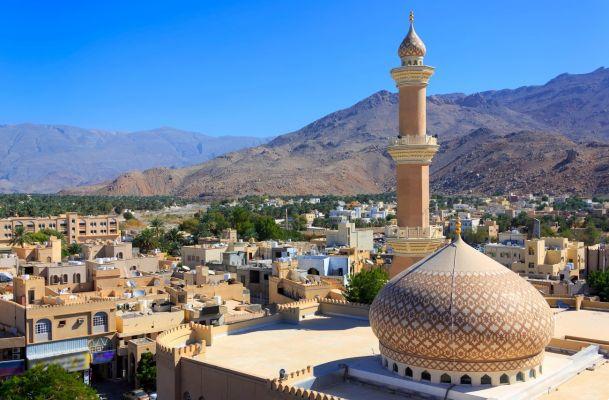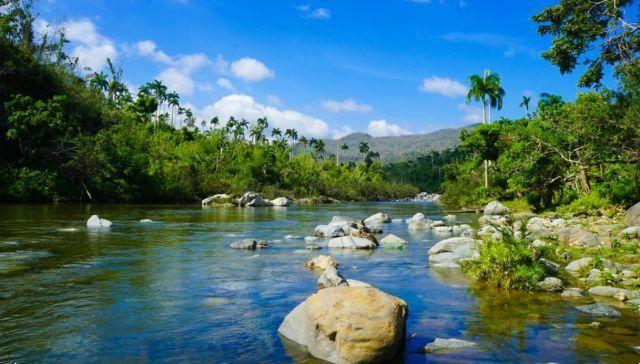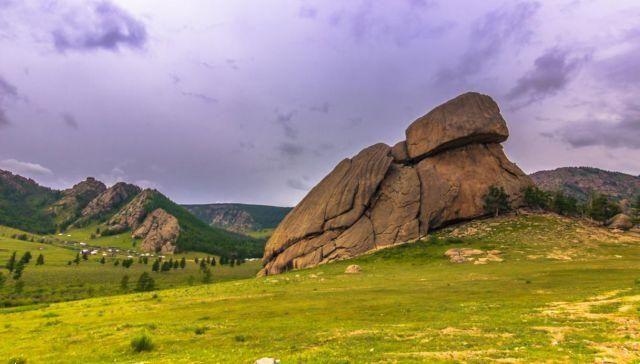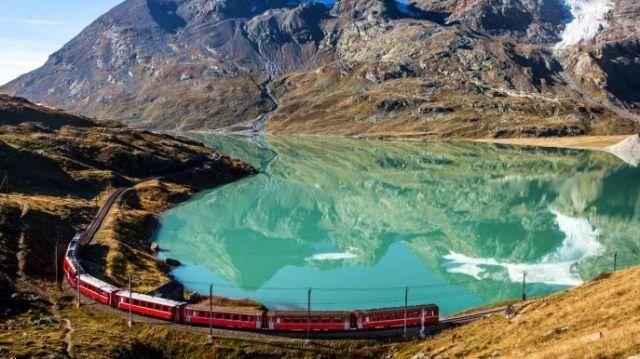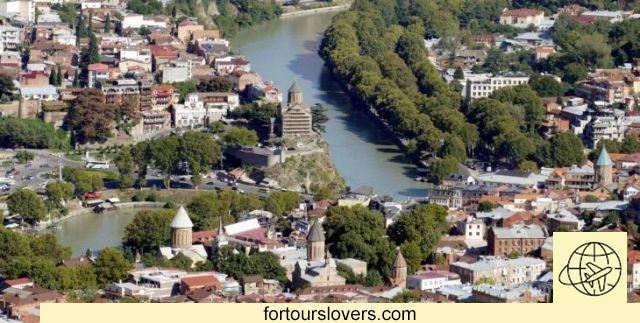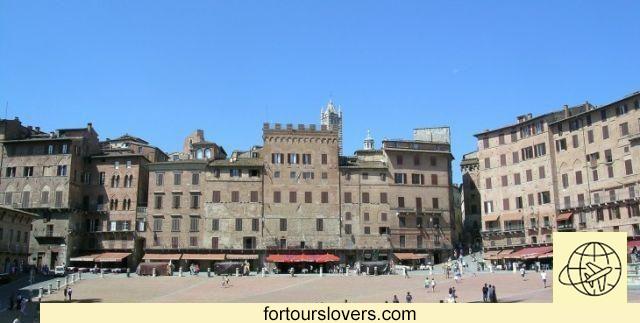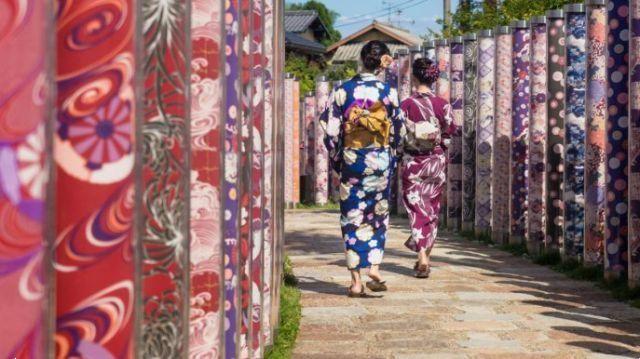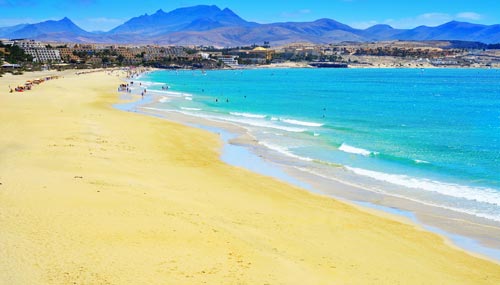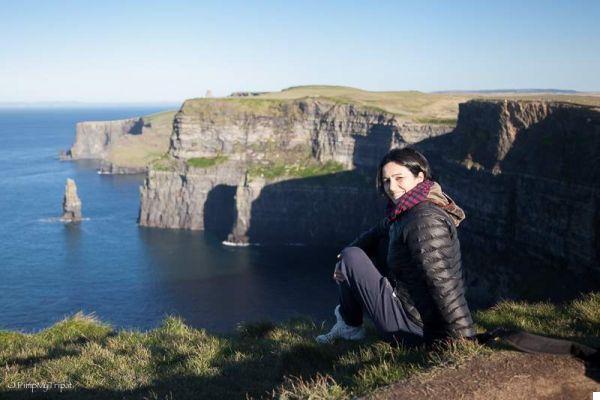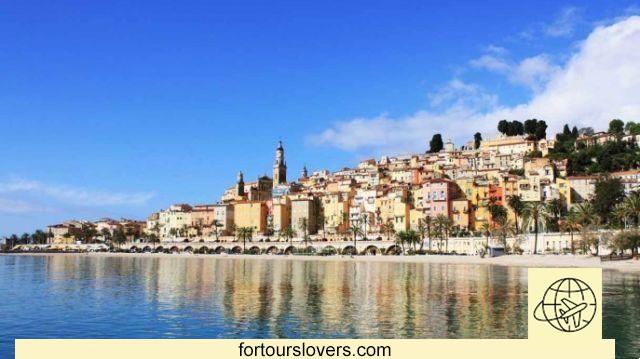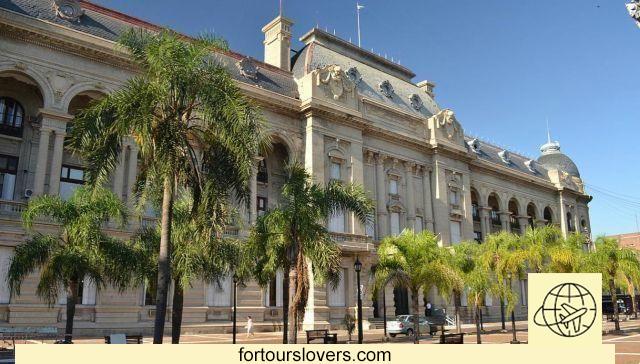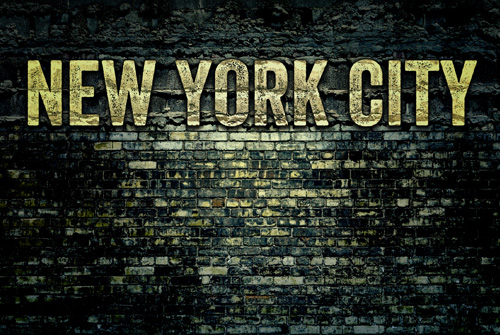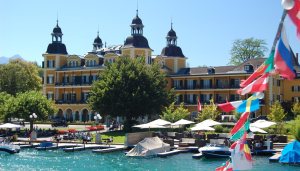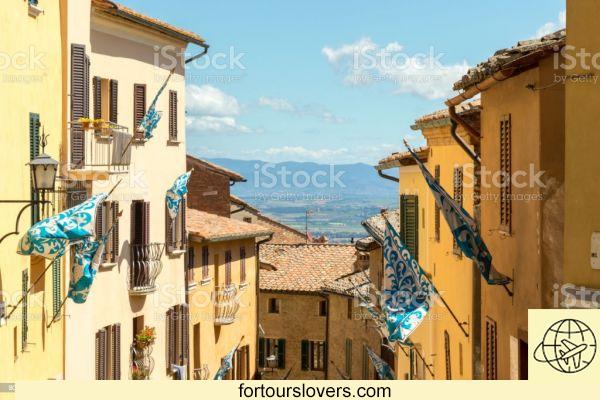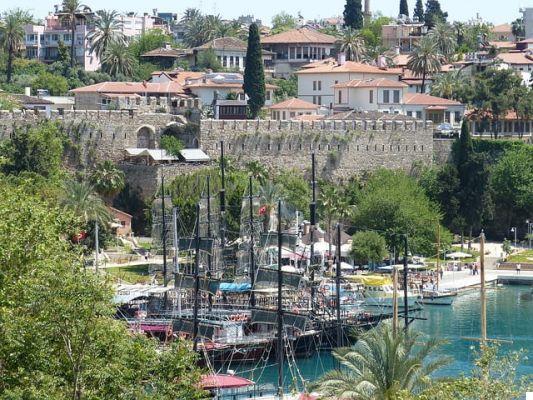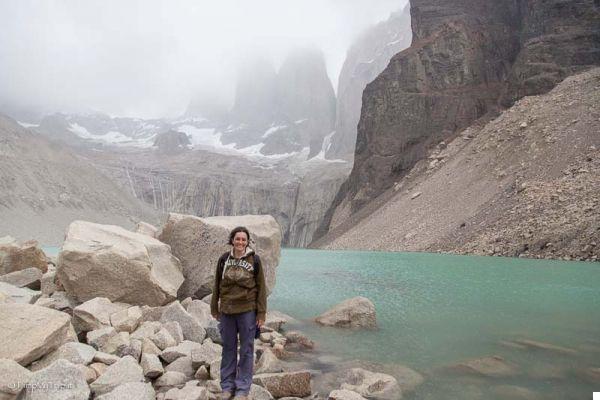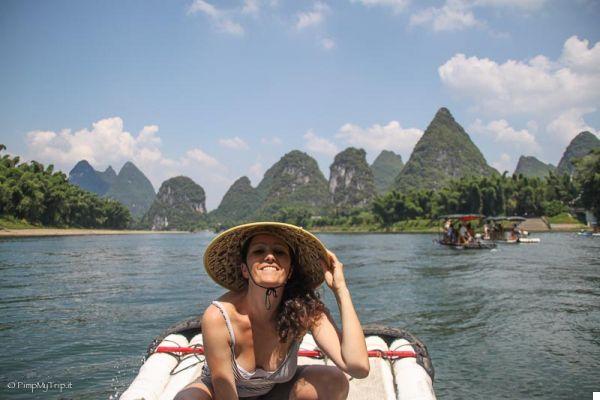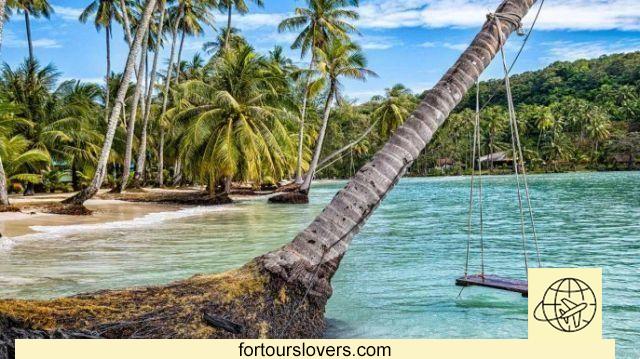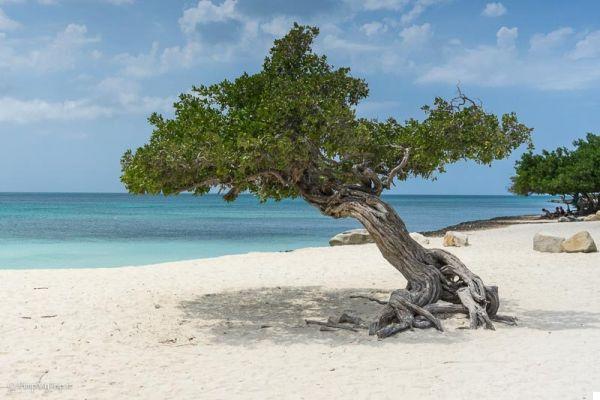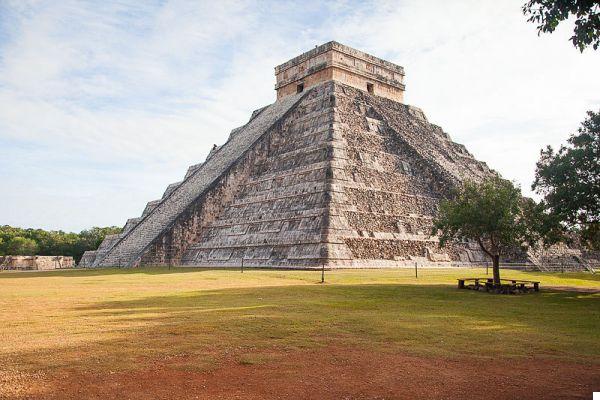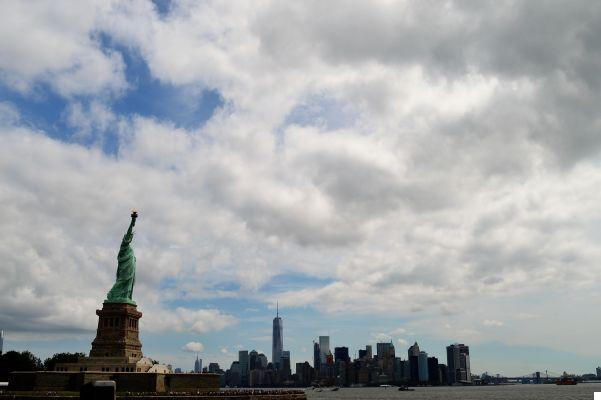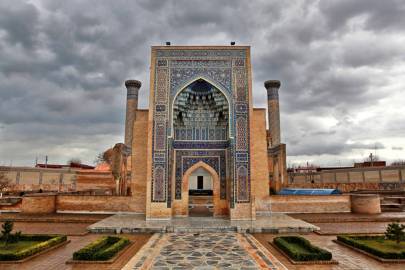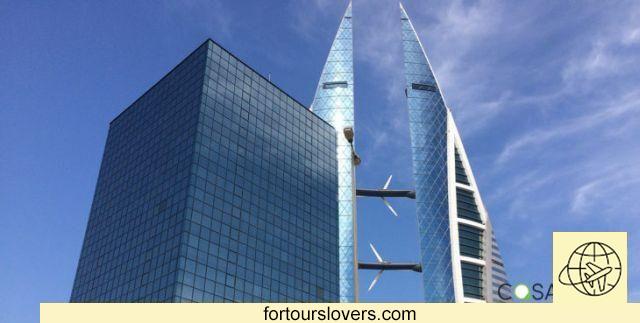
Bahrain
12 things to do and see in Bahrain and 5 not to doPetroleum, finance, pearls e tourism. These are the "assets" on which the economy of this is based tiny island state, the smallest of the Arabian Peninsula, formed by a archipelago of 33 islands (several of which are uninhabited) connected to each other by bridges and sand. It's a constitutional monarchy, the most tolerant of the area, probably due towestern influence started in the 500s with the Portuguese conquest and continued with British protectorate from the nineteenth century to the 70s. The population totals just over a million inhabitants, of which over 200.000 are foreigners ("expats"). In recent years, also thanks to the showcase of Formula 1 Grand Prix, tourism is constantly growing. About the circuit of Manama (the capital) but also of many other interesting sites to visit. Below we will try to list those that we think deserve the most. Happy reading.
1 National Museum
If you are really interested in learning more about the "Genius loci" Bahraini, the National Museum is undoubtedly one of the first stops to do. Like almost all major sites, the museum is located in Manama capital of the Kingdom. Built in the late 80s of the last century it extends over one area of about 28.000 square meters. Large exhibition spaces, well organized and with captions in English and Arabic allow visitors to develop a collective vision of the millenary local culture, ancient hinge of the commercial traffic between Mesopotamia e Nibujon. In short, an ancient museum, but with apost-modern architecture which allows an easy visit at the far from prohibitive cost of 1 bhd, the equivalent of approximately € 2,40.
2 Royal Camel Farm
THEbreeding of camels of the royal family of Bahrain (or Bahrain) is certainly one of attractions to visit if you have children in tow. Obviously, even if you don't have any, there is no doubt that these animals (especially females, kept aloof with their puppies) are able to arouse empathy ed affection in boys. But be careful to get too close. Usually, after a while you are on the spot, one of the many farm workers comes to explain how to do it stroking, photograph e feed to these animals throughout safety. If you are lucky, for a small tip, you will even be able to ride one. The Royal Janabiya Camel Farm Bahrain is open to the public every day, all day. Admission is free. The only precaution is to wash (or disinfect) your hands immediately after the visit.
3 Al Fateh Mosque
Once in Manama it is impossible not to notice the Al Fateh Mosque (from Ahmed Al Fateh, founder of the Al Khalifa dynasty which reigns over the small island state). Like almost everything in the city, the gigantism of the structure attracts the attention of tourists who every year more and more choose to visit the country. A fiberglass domeTwo minarets and decorative elements of the interior (lamps carved wood, a huge Swarovsky chandelier, carpets etc.) make it one of the most striking symbols of Bahraini well-being, a spiritual reference point for all Muslims in the world. Not surprisingly, it is one of the largest mosques on the planet and can host 7000 faithful. They are generally organized guided tours to know in depth the structure that can be visited as long as you have a appropriate clothing. Women, for example, must necessarily wear abaya (long black coat, of light fabric, covering the whole body except head, feet and hands) e veil, while everyone is obliged to remove their shoes at the entrance.
4 The Fort
Qal'at al-Bahrain XNUMXth century fortress built by the Portuguese is undoubtedly one of the main attractions of this tiny island state. It is no coincidence that the fort, surrounded by a moat, is UNESCO heritage. One of the most common tips is that of visit the ruins in the evening to better appreciate the contrast between the ancient part of the city, illuminated by "simple" spotlights, and the hyper-modern lights of the buildings that define the skyline of Manama, the capital of the Kingdom.
5 Pearls and precious in Bahrain
La pearl it is one of the symbols of Manama and Bahrain. A ancient tradition which has accompanied the development of the territory for centuries to the point of being an integral part of the history and local identity as certified by the Unesco protection in force for some years. Among other things, the collection of oysters not only continues, but in recent years has recorded a significant increase due to growing demand by merchants and jewelers. The pearl of Bahrain, in fact, is famous for its purity contributing significantly to the already thriving economy of this tiny island state of the Arabian Peninsula. To see the "District" of the island of Muharraq where the bulk of the boats dedicated to the collection of oysters leave from. Seventeen buildings, between warehouses, jewelers, residences of merchants and the inevitable mosque, historically attributable to the processing of this precious gem. Many other news and testimonies can be found within the National Museum. That said, in Bahrain it is worth buying gold and precious stones. Prices are much more affordable than in the Western market and therefore coming on holiday can be the right opportunity for a long-lasting value purchase.
6 Necropolis village Al'Aali
Over 170.000 tombs, that's the gigantic amount necropolis of the village of Al'Aali, not far from Manama. A huge cemetery, precious testimony of the mysterious Dilmun civilization active in the area since the third millennium BC The study of tombs, similar to artificial mounds of different sizes (the largest measure up to 15 meters in height) allowed to reconstruct thesymbolic and cultic universe of this civilization ofBronze Age devoted to flourishing commercial exchanges with the other populations of the area of Persian Gulf. Over time, some significant excavations have been transferred to the Bahrain National Museum and they can be visited there.
7 Bahrain World Trade Center
Due many di 50 plans one, for 240 meters di height linked by three wind turbines of diameter di 29 meters each. The Bahrain World Trade Center is the most shining symbol of the desire for modernity e sustainability of this country that exploits the enormous wealth guaranteed by oil fields to try, in perspective, to free itself from the resource. A "green oriented" policy which in addition to exploiting thewind energy also focuses on solar and waste water recycling. The building, in central Manama, is the country's most advanced experiment in terms of environmental sustainability, but it is not the only record: it is, in fact, one of the greatest shopping centers in the world with all, absolutely all, the most popular brands of high fashion: Louis Vitton, Fendi, Gucci, Versace, Bulgari etc. In conclusion, architecture, design, luxury e technology: these are the "pillars" on which this futuristic skyscraper stands Shopping made in Bahrain.
8 The Lagoon
A big shopping center in the heart ofAmwaj island made of shops, bar, restaurants, shop e open spaces in which to spend pleasant days with family and / or in the company of friends. The design and seafront location make this place one of a kind. Not surprisingly, the number of visitors between residents and tourists is constantly growing. To find out more, visit the official website: www.thelagoonbahrain.com
9 Bab el-Bahrain Souq
In search of the real Bahrain. This is the spirit with which to approach the visit to Manama market, in the north of the city, just below twin towers of the Financial Harbor. In reality, the Manama souq retains very little, at least compared to the markets of Tunisia, Morocco, Egypt and especially Qatar. However, a visit to this maze of alleys in between appliances, food e spices it is however very instructive. If only it allows you to become familiar with that part of the population far from the limelight of finance and fashion.
10 Sakhir Circuit
Since 2004, also in Bahrain formula 1. To host the most famous car circuit in the world, the small state of the Arabian Peninsula spared no expense by building a futuristic track in the middle of the desert. The Sahkir circuit, this is its name, stands out for showmanship e technology. Since the first edition it has proved to be particularly difficult for pilots who have to face sui generis environmental conditions here: from the sand that inevitably settles on the mantle (despite the use of particular products to limit the phenomenon), to the strong temperature range between the day and in the evening when the race is generally disputed. Three curiosities: the first Grand Prix, in 2004, was won by the German driver Michael Schumacher, for years forced to immobility due to a skiing accident; in 2011, however, the race was not disputed due to the riots that affected the country on the basis of the different ones "Arab springs" that that year also inflamed Tunisia, Libya, Egypt, Jordan, Yemen and Syria. Finally, unlike the other Formula 1 Grand Prix, he was on the podium champagne classic (prohibited like other spirits) is replaced by the Arab one, strictly non-alcoholic.
11 Nightlife
Bahrain is a cosmopolitan business center with a nightlife more free e tolerant compared to other towns in the area. Numerous restaurants e lounge bar where to eat, listen to music and have a drink. Often luxurious places, frequented not only by foreigners, but also by Saudi "cousins" ready to cross King Fahd Causeway, the famous causeway of King Fahd which unites the two states.
12 Go Kart
In addition to the Formula 1 Grand Prix, the Sahkir circuit is famous for the go Kart. Several championships are held there, but above all the facility is available to tourists who want to try their hand at karting. The organization makes available clothing e cars which vary depending on the age groups. All of this, of course, in full respect of the safety standards provided for by the discipline. A fun way to spend an evening in Bahrain with family and / or friends. For more information on the formulas, prices and times of access to the structure click here
1 Avoid August
Il best time to visit Bahrain is October / November - February / March. In the remaining months the temperature rises gradually but inexorably up to the terrible heat of August with peaks above 50 ° C. The risk, if not used, is to put a strain on the body. Conversely, decide to spend the Christmas in Bahrain, in the heat, on one of the many beaches (to visit the island of Al Dar with its many entertainment possibilities) is anything but a strange idea. Seeing is believing!
2 Watch out for the events on Friday, a day of prayer
After the social tensions of 2011, when Bahrain was also hit by the so-called wind "Arab spring", in the country there have been no more particular risk situations. Of course it's not all pink and flowers. The coexistence between Shiites e Sunnis (in power with the al Khalifa dynasty) is not always taken for granted, also because thePersian influence about the area is a historically established fact. That said, the center of Manama is not the subject of confrontation. At the most on Friday, a day of prayer, there may be demonstrations but the police forces guard the territory and the situation is calm. In any case, it remains preferable not to go too far into the peripheral areas and villages. Above all, before leaving for a distant destination like Bahrain, it is always advisable to consult the place "Traveling safe" del Ministry of Foreign Affairs, as well as register in the place "Where we are in the world" always within theCrisis Unit of the Farnesina.
3 Don't dress succinctly
I Bahrainis are open e available towards Westerners, they speak good english and are business people. In return they only ask non-hostile behavior o morbidly curious towards theIslam. First of all as regards theclothing. So better not stare too much or, worse still, take pictures of the covered women. Foreigners, on the other hand, residents or tourists, can dress normally, but always within the limits of social acceptability provided by the local culture. It means that in the vicinity of the places of worship you must have a decent clothing covering arms and legs, while in other public contexts it can be "Discovered" but never "succinct". Moreover, considering that there are many places for Westerners, these are not major limitations. The above requirements apply mainly when on the road. Observing them avoids problems and is a due form of respect.
4 Don't drink alcohol on the street
As known Islam prohibits alcohol. The "Expat", however, in premises equipped with appropriate license, they can drink alcohol without any problems. The important point is not to drink or show yourself drunk (or drunk) on the street. In this regard, what has already been said previously for clothing applies. That's enough respect local cultural requirements, among other things infinitely more tolerant than other nations of the area (for example in neighboring states the administration of alcohol has precise per capita limitations, while in Bahrain there is no), and there will be no problems of any kind. Finally a curiosity. If you happen to visit the country during Ramadan it is a good idea to respect the day fast.
5 Be careful behind the wheel
The automobile has always been one status symbol. It is therefore inevitable that in a nation as rich as Bahrain large engine car are many more than elsewhere. But woe to think that this authorizes crazy races on the highway. Overcoming i speed limits it can be very risky (in some cases it is even foreseen to be arrested for a day). One of the most frequent causes of road accidents is the use of smartphones while behind the wheel. The advice, therefore, is drive responsibly avoiding running more than allowed. That said, confirming the greater tolerance of Bahrain with respect to other nations in the area, the fact that there are no driving restrictions for women.




